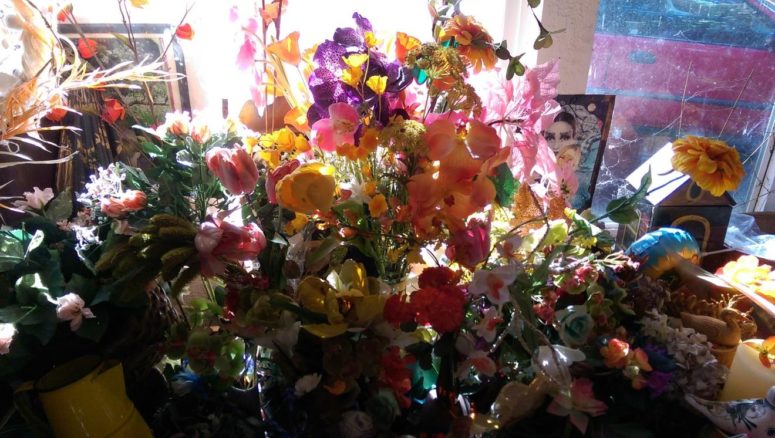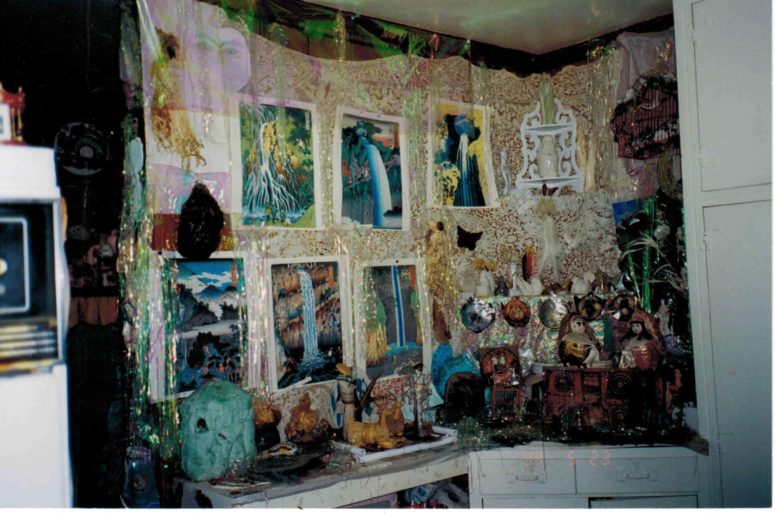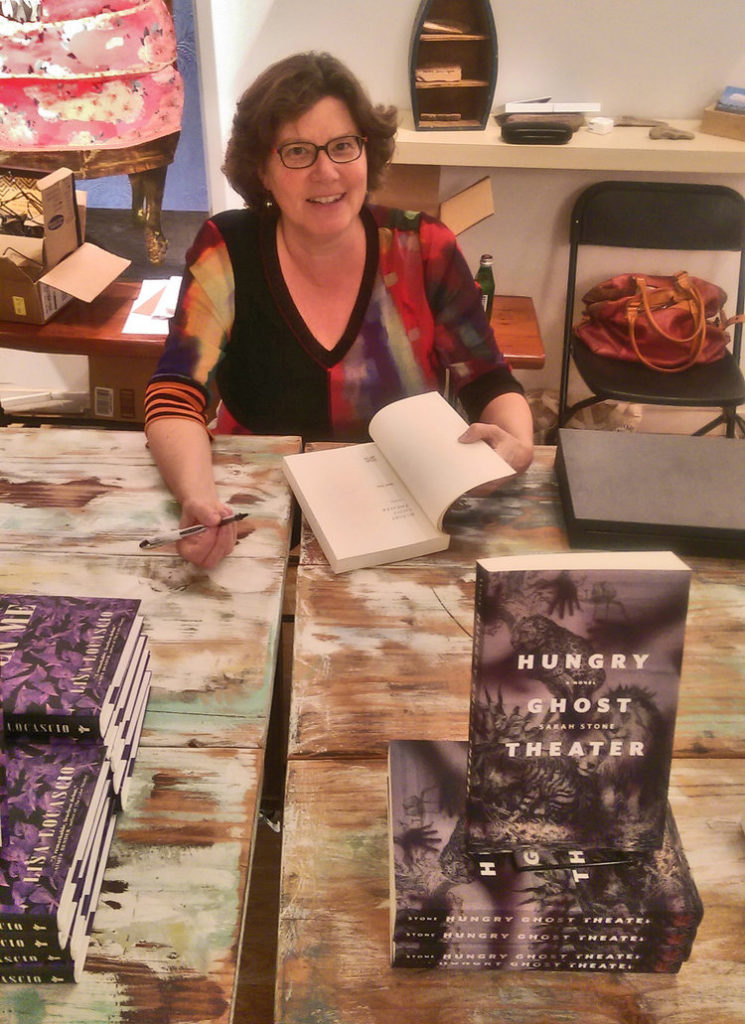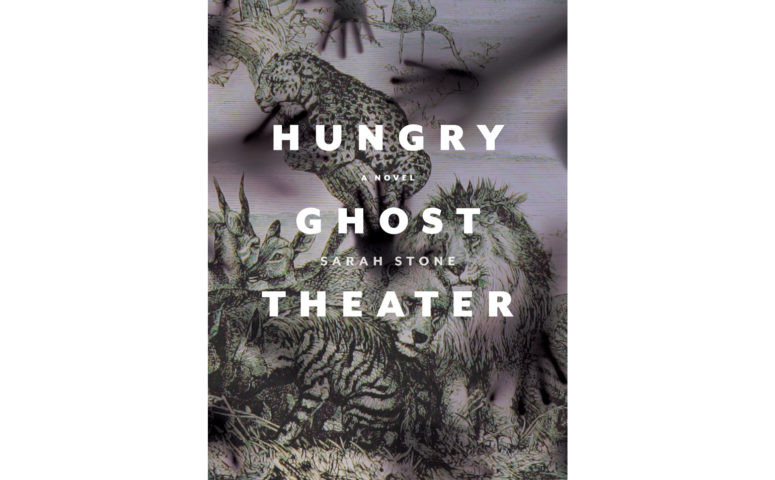I’ve known Sarah Stone for years. Her novel, “True Sources of the Nile” captured parts of a life that sounded familiar (Marin) and completely unfamiliar (Africa). More than fifteen years later she returns with her second novel, “Hungry Ghost Theater.” The geographic settings all feel familiar but the emotional landscape of family continues to be as frightening as any far away mysterious land.
Q: Can you tell us a little about how this novel came together? Were there separate pieces that you brought together? At what point did you know the shape of this novel?
A: For many years I was working on a more traditionally structured novel, but I was also sneaking away and writing shorter pieces about other characters. At some point, I realized that I was making another book. All the time, I was also reading, teaching, and taking pleasure in a wide range of novels that were built in unexpected ways, of shards and pieces. Linked story collections as well as books that functioned as novels. They had arcs in some way, questions raised by the beginning that were deepened or embodied by the end. Characters who showed up in one piece of the book appeared quite different when seen at another moment of their lives or through a different viewpoint.
Some of my favorites of these books included Joan Silber’s Ideas of Heaven, Jamaica Kincaid’s At the Bottom of the River, Louise Erdrich’s Love Medicine, Sara Pritchard’s Crackpots, Denis Johnson’s Jesus’ Son, and Jennifer Egan’s A Visit from the Goon Squad. And then there were books like Manuel Puig’s Kiss of the Spiderwoman, which functioned as a kind of play with interspersed documents or Anne Carson’s Autobiography of Red, a novel in the form of a poem. Doris Lessing’s A Golden Notebook is one of my foundational books: it might be the first novel I read that had a structure that helped to bring its themes to life. It was personal, political, about division and unity. I read it at thirteen and it changed everything for me.
So when I began to play with the shape of Hungry Ghost Theater, I had a long tradition to draw on. But I moved the pieces around a great deal and also pulled in some that had seemed like stand-alone stories but that were about people so similar to my characters that they very easily became part of the book.
Q: Elsewhere you’ve mentioned collage as your mother’s art form. Can you talk about that as it applies to fiction?
A: This photograph from my mother’s kitchen, taken towards the end of her life, shows how she put together color and pattern, juxtaposing unexpected elements. Hungry Ghost Theater moves through different places and time periods to tell the story of a family of artists and activists, along with a few people heavily influenced by the family. Most of them are idealists, though they don’t always live up to their ideals. (Well, who among us does?) The family is half-Jewish and carries the legacy of the Holocaust in their thinking, sometimes in their artistic or activist concerns, sometimes in their own behaviors.
In a collage, especially a maximalist collage (my mother was a maximalist, and so am I – we love excess and mess), there’s room for all kinds of strange details that, taken together, make up a kind of fractured, multi-faceted world.

Q: In one interview you compared the novel to a theatrical experience. There are plays inside the novel. Can you talk more about bringing these two literary forms together?
A: The theater gives us a chance to sit together in the dark, to collectively help the actors imagine a new reality. Often a totally improbable one! Some of the playwrights I love most (Mary Zimmerman, Wole Soyinka, Shakespeare), allow themselves great freedoms in time and space and in emotional logic. Hungry Ghost Theater has a couple of plays, which take place, respectively, in an assisted living community and in six different hells. The characters’ stories, at that moment, turn into dialogue, action, and stage directions: there’s a plausible deniability to material being presented as a play. So when a story gets ludicrous or fantastical, it fits into a theatrical tradition. Then, too, so many of the characters are actors. And just about all of the characters in the novel, actors or not, are constantly performing.
Q: Can you connect the link to Dante?
A: At a certain point, I realized that the theme of underworlds, hellish or otherwise, kept coming up, and that’s when I thought of The Inferno, a poem that has hold of my imagination, as so many others. I thought about Dante and how he conceived of sin (how his time conceived of sin) and how we think of biology and its influence on mental states. When and how do our choices get us into some of our greatest troubles? When does our biology make certain choices inevitable or almost inevitable? Hungry Ghost Theater became a kind of homage to and fight with Dante. Each of the nine pieces corresponds, often in subterranean ways, to the corresponding circle of his underworld. Like Dante in The Inferno, the characters go down into hell and then come back up. That’s important to me, the journey back out of hell to the sunlit world above.
Q: Can you make political art?
A: I don’t think we can help making political art. Political art doesn’t have to be programmatic or have a clear agenda for action. In fact, it’s almost always better if it doesn’t. But we live in the world, we’re surrounded by people living in different conditions, and many of those conditions aren’t accidental but come about from power grabs and the actions of those in power. Our planet is in danger because of political decisions. The theater troupe in Hungry Ghost Theater tries to name and bring to light some of the mechanisms around inequality and the predicaments of those in prison, the predicaments of those in chronic hunger. The performers struggle with some of the particular issues that come up with trying to make political art. But they wind up mixing the political and mythological and feel that they’ve gotten something right in the end.
Q: The novel moves between darkness and light. And cruelty and empathy? But I’m not sure either side wins.
A: I’m putting in another photo of one of my mother’s kitchen installations, this one from many years ago. I came home from school one day and found she’d done this, and I loved it at once. It’s full of darkness and light, some cruel and strange figures and some very sweet ones. And those waterfalls! It’s not a contest: in some places one element dominates and in others it’s more balanced. I’d like life to be all empathy and no cruelty. But so far, we haven’t achieved that. Another of my favorite novelists, Iris Murdoch, is phenomenal at bringing together different kinds of cruelty and empathy and then leaving it up to readers to make our own judgments. Including our own decisions about how we might want to change the ways we live, based on the mirror she holds up to us.

Q: Can you talk a bit about WTAW Press and how you ended up there?
A: Finding WTAW Press is one of the greatest pieces of good fortune I’ve ever had. I knew the Why There Are Words reading series, and that Peg Alford Pursell, who ran the series, was a brilliant writer. (Her gorgeous book of stories, Show Her a Flower, A Bird, A Shadow was the Foreword INDIES 2017 Book of the Year for Literary Fiction.) When she started a press, I knew I wanted her as an editor. By the second year of WTAW Press, I thought Hungry Ghost Theater was ready to send. It was a blind submission process, so I felt safe to take that chance. Fortunately she picked it out of the piles of manuscripts, along with Angela Mitchell’s wonderful Unnatural Habitats & Other Stories. Peg gave me brilliant help in the editing, asking all the right questions and helping me take the book to its final form.
Q: Have you started your next novel?
A: Hungry Ghost Theater is the first book of a trilogy. I’ve been working back and forth between the three books, so the purgatory and paradise books are well along. The Zamarin family keeps growing, changing, making mistakes, hurting each other, and helping each other out. I’ve been working with them for so long that they feel real and alive to me. It’s great to have them emerging into the world so that readers can get to know them too.

